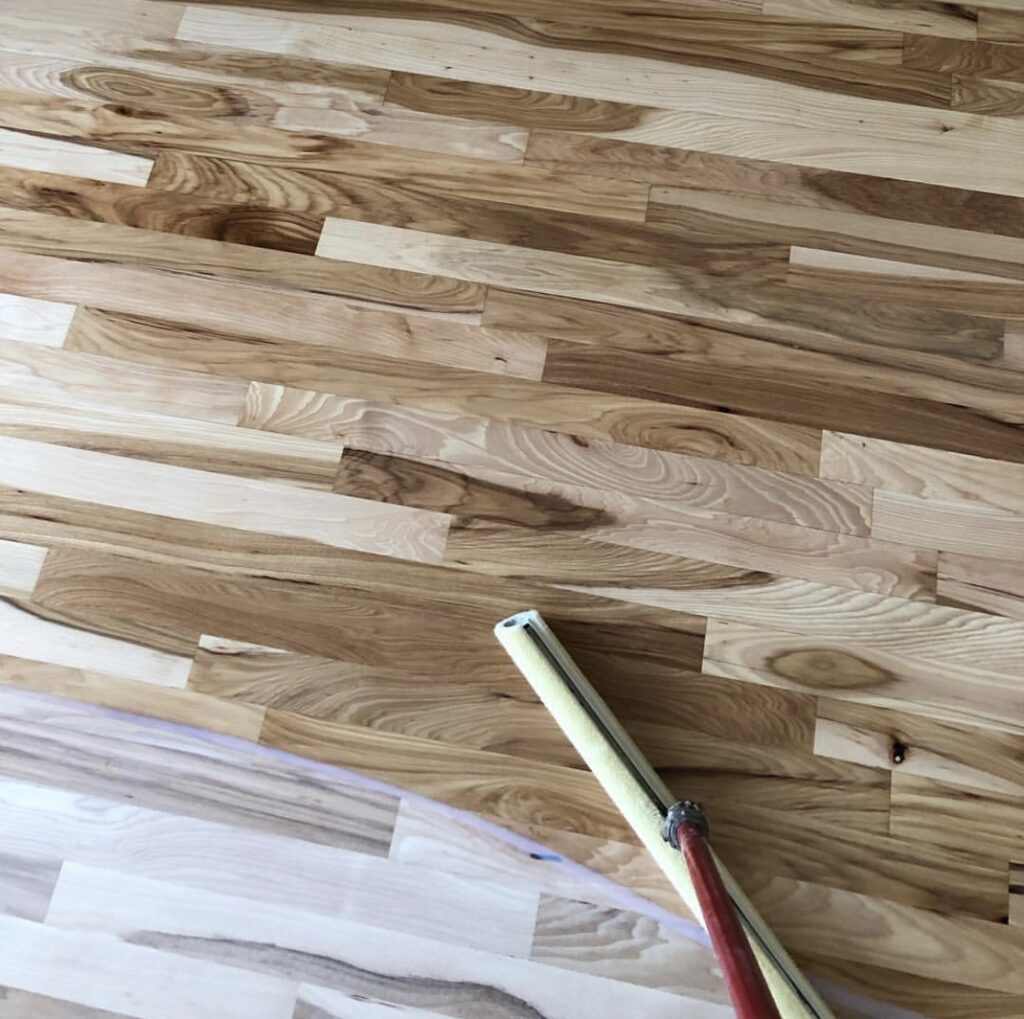
Whether you want to update your home or prepare it for the market, refinishing your hardwood floors is a great investment into the value and beauty of your home. There are many reasons to refinish your hardwood floors that include changing the overall appearance, remedying damage, or just performing regular maintenance. That said, a refinish isn’t necessarily your only option. Depending on the condition of your existing hardwood floor, you may only need a “screen and coat” or even to replace some areas completely. Continue reading to learn what to expect out of a refinish and when you should consider other maintenance options.
Why Should I Refinish My Hardwood Floor?
The most common reason homeowners want to refinish their floors is to get rid of scratches and old, ambered finish. Light, bright, natural floors are incredibly popular right now and many clients are shocked to see the true character of their floors come out from under old polyurethane. A natural refinish will leave your floor bright and without dated, undesirable orange tones. A refinish is also the only way to change the overall look of your floor completely with a custom stain option.
Spills, scruffs, scratches, or other traffic may cause uneven sheen or glare spots that make the floor appear patchy. Or, after years of use, the finish on an older hardwood floor may begin to wear away completely resulting in grey patches or rough, splintery areas of the floor. A refinish will eliminate all of these problem areas by sanding away all old finish and rough wood, leaving your floor looking brand new with an even sheen and no splinters.
If your floor has discoloration from UV damage, gaps, or peaks, a refinish should remedy these problems as well. During a refinish, your hardwood floor will be sanded deeply enough that UV damage will disappear, and non-seasonal gaps will be wood filled. The end result will be flat and uniform. Overall, the majority of concerns you may have with your current hardwood floor can be eliminated with a full refinish. You will be left with beautiful results that should last well over 10 years with proper maintenance.
Refinish vs. Screen and Coat
In today’s market, many hardwood flooring contractors are offering a screen and coat maintenance option. This process involves lightly abrading the top layer of finish on your hardwood floor and applying a new coat on top. A screen and coat will fill most surface scratches in the finish and can remedy any sheen or glare issues. It is a great, affordable maintenance tool to prolong the life of your floor and avoid the cost of a full refinish.
Unlike a refinish, a screen and coat does not sand down the wood, so it will not remedy deep dents or allow you to change the overall color of the floor. Generally speaking, a screen and coat will seal the current condition of your floor and prolong it, ultimately delaying the need for a full refinish. If your floor has damage beyond surface scratches such as grey patches or areas where raw wood is exposed, it will need to be refinished to bring it back to life. A good candidate for a screen and coat is a floor in great condition but with uneven sheen and surface scratches from wear. Often, a screen and coat is performed 6-8 years after a refinish.
Refinish vs. Replace
Though refinishing is incredibly effective at remedying damage and bringing old floors back to life, it isn’t a cure-all. Some damage is more extensive than sanding can repair, so replacement is the only option. Depending on the situation, this may apply to a few affected areas or the entire floor.
Deep pet stains are a problem that can not always be eliminated with a refinish. Depending on the quantity, severity, and age, they may not sand out entirely during the refinishing process. This may result in a less severe but still noticeable spot in the finished product. This can sometimes be mediated with a dark stain color, but if you want to avoid stain, replacement of the affected area may be the best option.
Water damage is a serious problem for wood floors and replacement is usually necessary to restore your floor back to its original state. Being an organic product, wood reacts strongly to water and can begin to rot or mold if left untreated. Often, the entire affected area along with some bordering areas need to be removed and replaced to properly mediate water damaged hardwood floors. A skilled hardwood flooring contractor can lace-in new wood and leave no trace of the replacement after a refinish. At Perennial Hardwood, we are highly experienced with working directly with our client’s insurance to remedy water damage claims. If you have a water damaged floor, Contact Us today to schedule your complimentary consultation.
All hardwood floors have a lifespan. Though solid hardwood flooring is one of the longest-lasting flooring options available, it can typically be refinished 4-5 times throughout it’s life. If the hardwood floors in your home have been refinished multiple times, it is important to consider how much life they have left. If the tongue and groove is exposed in any area, the floor probably cannot be sanded again and may need to be replaced instead. Your hardwood flooring contractor will be able to determine the life left in your hardwood floor during your consultation.
Next Steps
If cared for properly, new hardwood floors can last a lifetime. If you think that it may be time for a refinish, screen and coat, or to start fresh entirely, Contact Us to schedule your estimate.
